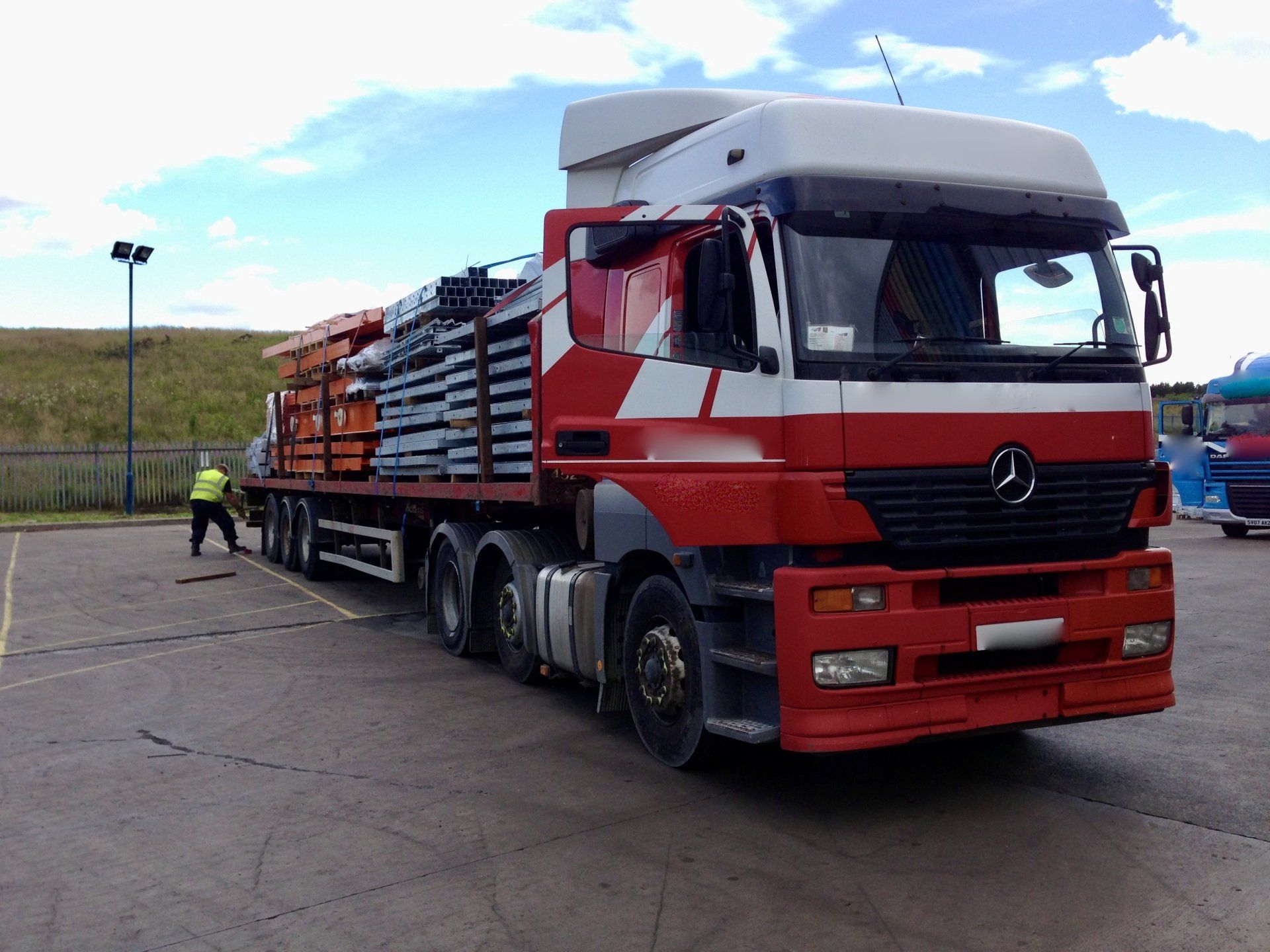Commercial Matters
PH461695 • 1 July 2020
Getting Paid

Every business knows that cashflow is king. Cash allows investment into new marketing, new market development and product or service R&D. Getting paid is crucial for business survival.
Long-term projects may result in commercial risk from Foreign Exchange (Forex) fluctuations, payment terms, shipping cost variations, Bonds, guarantees and warranties. These risks can easily wipe out profitability or even worse – no payment at all. Protection may be afforded through contract conditions, letters of irrevocable credit, up-front payments, using UK Export Finance or by charging a higher rate for the work equivalent to interest on an investment. Agree a delivery and payment schedule up front and STOP WORK if the money does not reach the bank. Anything is negotiable in International Trade.
Expect the unexpected with legal actions such as “cease and desist” from overseas competitors to close you down due to “alleged” patent infringement or they may introduce compromise agreements to restrict your trade activity.
Build a strategy to deal with lower cost economies to protect your intellectual property and prevent breach of copyright. Capitalise on the innovation, quality or problem solving that your product or services delivers. Continuous improvement and creativity
can be the best way of staying ahead of the competition.

What research have you done to ensure your product, service or technology has a place in the World? It is amazing how many companies rely on gut feel and guesswork. At best they carry out internet research when starting business overseas. The minimum requirement would be to understand the available market? How much export is available? What is the likely growth in the market? What is the likely return on sales? Having established at least some metrics, a business can set about getting the proposition, business plan, customer persona, competitor analysis, market entry and the pricing right. Finding new contracts and opening doors to business opportunity varies from country to country and one size does not fit all. Each new market brings new challenges, so previous experience is no guarantee of success. Trade shows are a great way to meet customers, understand their behaviour and their buying style. The popularity of trade shows seems to be waning so look into SEO and distributor engagement. However, build your reputation through delivery rather than relying too heavily on marketing or raising brand awareness. New market entry takes time and will not be an overnight success. One solution is to take on local distributors with their local knowledge of the language and the market. Engage them with sales and product training and they will promote your product or service and deliver end-user support for you. Introducing new technology to some markets may suffer from first mover reluctance with potential customers wanting to stick to traditional ways. Products or services at the end of the life-cycle may be exactly what an overseas market is looking for, thereby prolonging a revenue stream and delivering new opportunities. To summarise, international trade is relentless and never stands still. Keep assessing your market or sector and adjust your proposition accordingly.

Any flaws in your Product or Service are multiplied many times over when doing business overseas. Project Handling and Operations should therefore be of the highest quality. Are you market ready? Confirm the specification in writing. Have you allowed for local standards, temperature, humidity and infestation? Are you manufacturing in metric or imperial? Do you have a change control process in place? At the end of the day, you want to get paid for what you have produced. Manufacture to the best available standard and follow strict Quality Assurance procedures. Ensure everything is right before shipping, as it is very difficult and expensive to rectify once you are overseas. Solutions might include a specialist export team, with staff willing to travel at short notice to exotic places to put things right. Alternatively engage and train local agents, handlers and distributors to be your eyes and ears in market. Focus on the traceability of products and component parts to enable feedback of your in-market performance. Overseas trade opens up a great opportunity to grow a business. This does however bring added challenges such as keeping up with demand and sustainable organic growth. Lead times and consumption rates will alter. You might need to stockpile raw materials and completed works. Covid-19 has highlighted the importance of multiple supply chains, otherwise production grinds to a halt. Productivity levels have always been an issue in the UK. Recruitment and retention of staff requires investment in skills development, apprenticeships, equipment, new technologies, process and continuous improvement. These particular challenges are dealt with time and money. However, the benefits of increased productivity, using existing capacity and increased survivability, far outweigh the disadvantages.

If I am stuck for ideas, I have dozens of business books that I review for inspiration and to help me move forward. The following are my Top Dozen books that I use the most and often suggest to others to get hold of. In no particular order: 1. The McKinsey Mind – Ethan M. Rasiel and Paul N. Friga 2. Moments of Truth – Jan Carlzon 3. Blue Ocean Strategy – W. Chan Kim and Reneé Maubourgne 4. Winning – Jack Welch with Suzy Welch 5. What Color is Your Parachute? – Richard N. Bolles 6. Oversubscribed – Daniel Priestley 7. The Culture Map – Erin Meyer 8. How to Win Friends and Influence People – Dale Carnegie 9. To Sell is Human – Daniel H. Pink 10. The Tipping Point – Malcolm Gladwell 11. Purple Cow – Seth Godin 12. The E Myth – Michael E. Gerber

It is vital to understand the global economy in the context of your Business Plan and explore each specific market to fully understand the Challenges of doing business overseas. It is essential to have a flexible Export Strategy and quickly adapt to capitalise on opportunities when they arise. Variations across the Global Economy can benefit a product or service life-cycle. Seasonal variations in northern and southern hemispheres and the rotation of demands across the Globe can more than double the length of your “active-year”. Consider the stability of economies, ease of doing business, proximity and synergy with your business. There is plenty of readily available data through the likes of the UK’s Foreign and Commonwealth Office (FCO), the World Bank and the Organisation for Economic Cooperation and Development (OECD). Alternatively, specific research can help determine new opportunities, country or global Best Fit, Market Trends, Channels, Size of Market Opportunity, Percentage of Available Market, Competitors, Emerging Technologies, Potential Clients and Critical Success Factors. COVID-19, Brexit and Globalisation bring disruption and uncertainty. These bring concerns about bureaucracy, shipping delays, stockpiling, raw materials, resources, supply-chain, commodity prices and trade terms. Will the current free movement of goods and services between the UK and the EU remain? Will the UK follow the WTO rules? Or more likely, something in between? When and what will the new trade agreement look like? How can you stay ahead of the curve? Monitor news feeds for target sectors and markets. Carry out the classic PESTEL (Political-Economic-Social-Technology-Environment-Legal) analysis. Visit markets first hand to meet businesses, government bodies, attend conferences and exhibitions and build relationships with overseas contacts. The Global Economy will continue to be hard to predict. Do not work in isolation, research and look externally for ideas and solutions. Above all, One person’s challenge can be another person’s opportunity and success.

Whether your business offers a product or a service, Delivery is very important. Your business might involve posting a package, loading a container or issuing a report electronically, however you need to consider the challenges of Cost, Quantity, Quality and most important of all to the customer, Timing. Shipping, transport, logistics, packaging and the local supply chain all form part of the delivery process to ensure your product arrives on time and in good shape. There should be no surprises for the customer, so delivery on time is critical. Delivery later than expected causes customer issues, so track and be certain of your supply chain with suitable stock levels or perhaps warehousing in market. Having got a quote to ship from the UK to Sweden I discovered that the price had shot up prior to delivery. Rather than absorbing the increase I spoke to the customer and they were able to organise the shipping from their end at half my original quote. So it is well worth shopping around and thinking creatively . This highlights the issue of responsibility , so become acquainted with INCOTERMS 2020 and the differences between EXW (Ex-Works) through to CIF (Cost, Insurance and Freight). Correct Export Documentation is also crucial, particularly as we head towards BREXIT , so get to know your local Chamber of Commerce who will be up to date with the latest shipping process. Packaging today is all about being sustainable, reusable and returnable. However, do not forget issues such as labelling, temperature control, weather protection, handling dangerous goods, dual-use products and for the likes of Australia, heat-treated timber pallets! Reputation takes years to develop and can quickly be ruined if your product does not arrive in one piece and on time. So plan, monitor and execute.

The greatest barrier of all when undertaking International Trade, irrespective of how great your product or service is, is Culture, Language and Bureaucracy . Before I target any market, Erin Meyer’s book The Culture Map is my go to reference. “If your business success relies on your ability to work successfully with people from around the world, you need to have an appreciation for cultural differences as well as respect for individual differences.” A product that has a place in the UK may be totally inappropriate overseas. My advice is read and apply this book to understand Culture and speak to people who have first-hand experience. Otherwise learn fast and learn from your mistakes! Translation from the local Language to find opportunities and translation into the local Language for bidding purposes is crucial. Websites, collateral, training materials and operation manuals may need to be in multiple languages, even to the extent of British English and American English. Do not rely on Google translate. It has its place to get the gist of the language, BUT always engage a professional translator to be certain. Having a local presence and recruiting multi-lingual staff all helps. Never rely on the quality of your customer’s English or on their interpreter, as things are often lost in translation. Bureaucracy means becoming friendly with the Export Documentation team in your local Chamber of Commerce, to ensure you have all the correct paperwork. However Bureaucracy can also include having the correct electrical voltage and frequency, a product fit for different weather conditions, differing stock keeping units (SKU) and designed to local codes of practice such as CE (EU), UL (US) and CSA (Canada) to name a few. Do you take a chance with your existing design and then risk time and money getting local certification? Where is the UK going to stand with the EU in terms of continuing free-trade, a move to WTO rules or something in between? Export licences, dual-use items and export documentation, tariffs and quotas all need consideration. Some Local Content should be considered to minimise or mitigate tariffs and duties altogether. Not being familiar with local Culture, Language and Bureaucracy can really trip you up on your road to global success. So get up to speed and keep up to date.

What research have you done to ensure your product, service or technology has a place in the World? It is amazing how many companies rely on gut feel and guesswork. At best they carry out internet research when starting business overseas. The minimum requirement would be to understand the available market? How much export is available? What is the likely growth in the market? What is the likely return on sales? Having established at least some metrics, a business can set about getting the proposition, business plan, customer persona, competitor analysis, market entry and the pricing right. Finding new contracts and opening doors to business opportunity varies from country to country and one size does not fit all. Each new market brings new challenges, so previous experience is no guarantee of success. Trade shows are a great way to meet customers, understand their behaviour and their buying style. The popularity of tradeshows seems to be waning so look into SEO and distributor engagement. However, build your reputation through delivery rather than relying too heavily on marketing or raising brand awareness. New market entry takes time and will not be an overnight success. One solution is to take on local distributors with their local knowledge of the language and the market. Engage them with sales and product training and they will promote your product or service and deliver end-user support for you. Introducing new technology to some markets may suffer from first mover reluctance with potential customers wanting to stick to traditional ways. Products or services at the end of the life-cycle may be exactly what an overseas market is looking for, thereby prolonging a revenue stream and delivering new opportunities. To summarise, international trade is relentless and never stands still. Keep assessing your market or sector and adjust your proposition accordingly.

There is still great uncertainty over what the trade deal will be with the EU. Will the UK resort to WTO rules, retain the same EU rules or something in between? At the moment, nobody knows! Even the US is playing hardball with its “America First” policy. One thing is certain, trading overseas is great for business. It opens up a greater number of markets, sectors and customers Increases productivity Increases productivity growth Achieves fuller use of existing capacity Increases the lifespan of products, and Makes a business more likely to survive. Export is exciting and challenging but can take time to be successful. Exporting brings Financial and Emotional rewards. Exporting brings more business opportunities, helps scale-up, mitigates risk and copes with variations across Global Economies. Trial and error is one way to embark on International Trade, but learn quickly from your mistakes. Are you fit for international business? Are you export ready? Have you done your market research? Or are you just hoping for the best? Over the last ten years Waverly has reviewed over 400 international trade strategies and dealt with many of the challenges that companies face when selling their goods or services overseas. Based on that experience, there are essentially seven areas of challenge to think about and many pitfalls to avoid. 1. Proposition Development 2. Culture, Language and Bureaucracy 3. Commercial Matters 4. Delivery 5. Global Economy 6. Operations 7. Building Trust and Confidence Even experienced Exporters fail in new markets. Exporting is not a “Silver Bullet” and there is no guarantee of success. Poor products or services get magnified many times Overseas, so success requires Aspiration, Hard Work and Commitment.

Many people are having to work from home. This is similar to a ship taking shelter in a port during a storm. When stuck in a port, time should be spent on maintaining your business, preparing for the voyage ahead and dreaming of blue skies. The storm will blow over and normality will return. There are many maintenance activities to think about: - Dig out your Business Plan - review it and give it a re-fresh - Carry out Market Research – support the refreshed business plan with new opportunities, new customers, new sectors and see what the competition is up to - Build and develop your Proposition - consider what you are offering as a business - Consider International Trade - start or expand into new markets and sectors - Get ready for Bidding – build your support documents, boilerplate, policies and pricing strategy. - Engage with your Existing Customers – tell them what you are up to and remember repeat business is much easier than finding new business - Build a set of Prioritised SMART Objectives – define the actions and timescale - Take steps to Improve Productivity - learn a new business Topic, build a new Process, manage your Cashflow, find New Business. Things will improve, eventually. Do something positive and get ready to hit the ground running when the weather improves and you can leave the port. Need any help? Get in touch. First published on LinkedIn April 2020